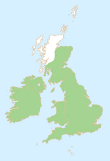SPECIES
Description of species that can be decoyed
SOURCE: http://www.rspb.org.uk/birds/guide/
************************************************
Woodpigeon
Columba palumbus
The UK's largest and commonest pigeon, it is largely grey with a white neck
patch and white wing patches, clearly visible in flight. Although shy in the
countryside it can be tame and approachable in towns and cities. Its cooing call
is a familiar sound in woodlands as is the loud clatter of its wings when it
flies away.
Where does it live?
Breeding
In the wider countryside it is found on farmland with hedges, trees and copses.
In towns and cities it occupies parks and gardens
Wintering
Similar to breeding habitats. Large flocks can be found out on farmland fields.
Where to see it
Found across the UK in fields and woods, and also in towns and cities where they
frequent parks and gardens.
What does it eat?
Crops like cabbages, sprouts, peas and grain. Also buds, shoots, seeds, nuts and
berries.
What does it sound like?
Most common call is 'coo coooo coo cu-cu'
When to see it
All year round
Similar species
stock dove, rock dove
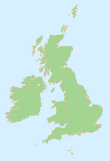
*******************************************************
Rook
Corvus frugilegus
Bare, greyish-white face, thinner beak and peaked head make it
distinguishable from the carrion crow. Rooks are very sociable birds, and
you’re not likely to see one on its own. They feed and roost in flocks in
winter, often together with jackdaws.
Where does it live?
Breeding
Rooks prefer lowland farmland - open fields, especially grassland, and plenty of
tall trees close by where they build their nests together in a rookery.
Wintering
Similar to breeding habitats
Where to see it
Rooks are most usually seen in flocks in open fields, or feeding in small groups
along a roadside. They will come into town parks and villages but largely keep
clear of the middle of big towns and cities. They are absent from the far north
west of Scotland.
What does it eat?
Worms, grain and insects
What does it sound like?
A cawing 'kaah' call; song of squeaks and croaks
When to see it
All year round.
Similar species
carrion crow, jackdaw.
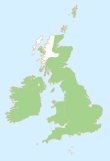
***********************************************************
Hooded crow
Corvus cornix
The hooded crow is closely related to the carrion crow, which until recently
was regarded as the same species. In areas where the two species overlap there
may be some interbreeding with hybrids showing a mixed grey and black body
plumage. Like carrion crows, hoodies also feed on dead animals. Unlike crows
they can be more sociable in the feeding habits and groups of them may be seen
together in fields.
Where does it live?
Breeding
In the UK and Ireland, hooded crows prefer open country with scattered trees and
rocky crags, moorlands, inland and coastal cliffs, woodland and forest edges,
and mountains.
Wintering
Found outside breeding habitat on saltmarshes, heathland and commonland.
Where to see it
Found in N and W Scotland, N Ireland and on the Isle of Man, where it replaces
the carrion crow. Outside the breeding season it is found across the breeding
range and is also found, but scarce in E Scotland and even rarer down the
eastern side of England. Most of the winter visitors come from Scandinavia.
What does it eat?
Omnivorous - includes carrion
What does it sound like?
A loud 'krraa'
When to see it
All year round in the breeding range. Outside this it is best looked for between
October and March.
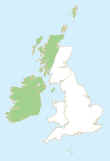
********************************************************************
Jackdaw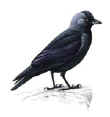
Corvus monedula
The jackdaw is the smallest bird in the crow family. It is black
with a grey nape, pale eyes and a short, stubby bill. You tend to see several
together as they are gregarious birds. They are widespread and common throughout
most of the UK, except north-west Scotland. Their loud, staccato call is easy to
recognise; it is a high-pitched ‘kya’ and distinctive, slightly squeaky ‘jack’.
They are often aerobatic, soaring and gliding, then performing steep dives.
Jackdaws naturally nest on cliffs and crags, but in towns will happily nest on
buildings and chimneys. They will also use large open-fronted nestboxes. Females
lay four to six eggs between April and May. They have only one brood each year.
Jackdaws are reputedly very intelligent and are frequently mentioned in
folklore.
What does it eat?
A varied diet including worms, insect larvae, birds' eggs and nestlings,
small mammals, grain. Occasionally visit birdtables.
When will I see it?
All year round.
Where will I see it?
In gardens in the woodland area, the hedge, bird bath, nestbox, on the
birdtable and lawn. Also heaths, woods, parks, sea cliffs, hedgerows and towns.

******************************************************************
Jay
Garrulus glandarius
AKA: Eurasian jay
Although they are the most colourful members of the crow family, jays are
actually quite difficult to see. They are shy woodland birds, rarely moving far
from cover. The screaming call usually lets you know a jay is about and it is
usually given when a bird is on the move, so watch for a bird flying between the
trees with its distinctive flash of white on the rump. Jays are famous for their
acorn feeding habits and in the autumn you may see them burying acorns for
retrieving later in the winter.
Where does it live?
Breeding
Jays like broad-leaved and coniferous woodland with adequate protective habitat.
Oak, beech and hornbeam woods are favourites, and smaller thicket and spinney
may be used. It is moving into more suburban areas where there are mature trees
- parks, cemeteries and gardens.
Wintering
Similar to breeding habitats.
Where to see it
Found across the UK, but only in southern Scotland. Lives in both deciduous and
coniferous woodland, parks and mature gardens. Likes oak trees in autumn when
there are plenty of acorns. Often seen flying across a woodland glade giving its
screeching call. and it becomes more obvious in autumn when it may fly some
distance in the open in search of acorns.
What does it eat?
Acorns, nuts, seeds and insects.
What does it sound like?
A harsh screeching call
When to see it
All year round, but often more obvious in autumn when they travel most in search
of acorns, beech mast and hazelnuts to bury.

*************************************************
Magpie
Pica pica
AKA: Black-billed magpie (N America)
Magpies seem to be jacks of all trades – scavengers, predators and
pest-destroyers, their challenging, almost arrogant attitude has won them few
friends. With its noisy chattering, black-and-white plumage and long tail, there
is nothing else quite like the magpie in the UK. When seen close-up its black
plumage takes on an altogether more colourful hue with a purplish-blue
iridescent sheen to the wing feathers, and a green gloss to the tail.
Non-breeding birds will gather together in flocks.
Where does it live?
Breeding
They are found in many habitats - woodland, farmland, moorland, parks and
gardens - though they prefer grassland with thick hedges or scattered trees.
They have adapted well to urban and suburban environments and can be seen right
into the centres of cities.
Wintering
Similar to breeding habitats.
Where to see it
Found across England, Wales and N Ireland, but more localised in Scotland,
absent from the Highlands. Seen in a range of habitats from lowland farmland to
upland moors.
What does it eat?
Omnivore and scavenger.
What does it sound like?
Harsh chattering and chacking calls.
When to see it
All year round.
